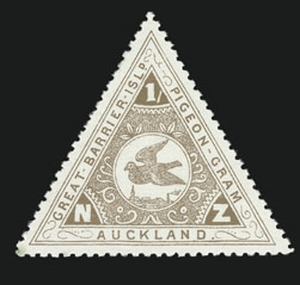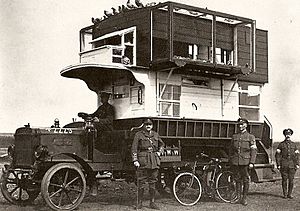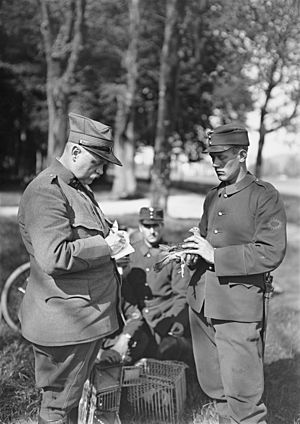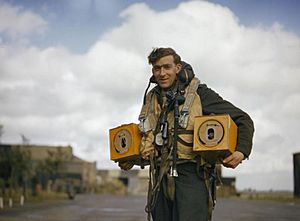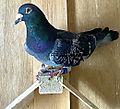Homing pigeon facts for kids
A homing pigeon is a special type of pigeon. These birds have been trained to find their way home over very long distances. Wild rock pigeons, from which homing pigeons were bred, also have this natural ability. They usually return to their own nest and mate. This made it easy to breed pigeons that could fly home from far away.
Some homing pigeons have flown as far as 1,800 kilometers (about 1,118 miles) in races! They can reach speeds of up to 95 kilometers per hour (59 mph).
When homing pigeons are used to carry messages, they are called carrier pigeons. A message is written on thin, light paper, rolled into a small tube, and attached to the bird's leg. This is known as pigeon post. Pigeons can only fly back to a place they know as "home." So, for "pigeon mail" to work, the sender must have the receiver's pigeons. White homing pigeons are also used in special ceremonies, like weddings or sporting events.
Contents
History of Homing Pigeons
People have used homing pigeons for a very long time. Around 3000 BC, ancient Egypt used them for sending messages. Pigeons have a great sense of direction, which helps them find their way home even from far away. Messages were tied to their legs, and the pigeons would fly back to their nests. By the 1800s, homing pigeons were widely used for military messages.
The sport of flying messenger pigeons began over 3,000 years ago. They were even used to announce the winners of the Ancient Olympic Games.
Messenger pigeons were used in Baghdad as early as 1150. Genghis Khan also used them. By 1167, a regular pigeon mail service was set up between Baghdad and Syria. In 1436, a traveler named Pedro Tafur saw carrier pigeons in Egypt. The Republic of Genoa used pigeons in their watchtowers across the Mediterranean Sea. Tipu Sultan of Mysore (1750–1799) also used messenger pigeons. They would return to a mosque in Srirangapatna, which was his headquarters. You can still see the pigeon holes in the mosque's towers today.
In 1818, a big pigeon race called the Cannonball Run happened in Brussels. In 1860, Paul Reuter, who later started the Reuters news agency, used over 45 pigeons. They delivered news and stock prices between Brussels and Aachen, where early telegraph lines ended.
During the Franco-Prussian War, pigeons carried mail between the city of Paris, which was under attack, and other parts of France. In December 1870, a pigeon flew from Perpignan to Brussels in ten hours, carrying tiny films of messages.
Historically, pigeons only flew one way, back to their home. They had to be brought back manually for another flight. However, by placing their food in one spot and their home in another, pigeons have been trained to fly back and forth up to twice a day. They can cover round trips of up to 160 kilometers (100 miles).
This reliability led to pigeons being used for mail routes. The Great Barrier Pigeongram Service in New Zealand started in 1897. This might have been the world's first regular air mail service. The first "airmail" stamps were even made for this service from 1898 to 1908.
Even in the 21st century, some police departments in Odisha, India, used homing pigeons. They provided emergency communication after natural disasters. In 2002, India's Police Pigeon Service was stopped because the Internet became more common. The Taliban banned keeping or using homing pigeons in Afghanistan.
Today, pigeons still compete in races.
Scientists have studied how pigeons find their way home from places they've never seen before. Many believe pigeons use a "map and compass" system. The "compass" helps them know which direction to fly. The "map" helps them figure out where they are compared to their home.
The compass part seems to use the sun. But how the "map" works has been a big mystery. Some researchers think pigeons can sense the Earth's magnetic field.
One idea was that pigeons had iron particles in their beaks that acted like a compass. However, a study in 2012 showed this wasn't true. So, scientists are still looking for how animals sense magnetic fields.
Other research suggests pigeons use their sense of smell. They might use the smells in the air to find their way. This is called olfactory navigation.
Another idea is that homing pigeons use visual landmarks to navigate. They might follow familiar roads or other human-made features, just like people do. They can make turns and follow routes they know well.
Some scientists think homing pigeons use very low-frequency sounds, called infrasound, to navigate. These sounds are too low for humans to hear. Even very quiet infrasound can affect pigeon navigation. When pigeons first take off, they might fly in circles to "map" these long infrasound waves.
Experiments show that different types of homing pigeons might rely on different clues. For example, some pigeons might be confused by a magnetic problem, while others from a different home might not be affected. Also, changing the pigeons' sense of time or removing smells from their home can affect their ability to return.
Studies using GPS have also suggested that differences in gravity might play a role in their navigation.
Roles of Homing Pigeons
Carrying Messages
A message can be written on thin, light paper, rolled into a small tube, and tied to a messenger pigeon's leg. Pigeons will only fly back to their "home" point. So, for "pigeon post" to work, the sender needs to have the pigeons that belong to the person receiving the message.
With training, pigeons can carry up to 75 grams (about 2.5 ounces) on their backs. As early as 1903, a German pharmacist named Julius Neubronner used carrier pigeons to deliver urgent medicines. In 1977, a similar system with 30 carrier pigeons was set up between two hospitals in England. The pigeons carried unbreakable sample vials back to Plymouth General Hospital. This system was no longer needed in 1983 when one hospital closed. A similar system also existed between two French hospitals in the 1980s.
Wartime Communication
Pigeons were used a lot during World War I. One famous homing pigeon, Cher Ami, was given a French medal called the Croix de guerre. She earned it for bravely delivering 12 important messages, even after being badly hurt.
During World War II, Irish pigeon Paddy, American pigeon G.I. Joe, and English pigeon Mary of Exeter all received the Dickin Medal. This award is for animals that show great bravery. They were among 32 pigeons to get this medal for saving human lives. Eighty-two homing pigeons were dropped into the Netherlands during Operation Market Garden in World War II. Their home was in London, meaning they had to fly 240 kilometers (150 miles) to deliver messages. Also in World War II, hundreds of homing pigeons were dropped into northwest Europe. They helped local resistance fighters send secret information. Pigeons were very important during the Invasion of Normandy because radios could not be used. This was to prevent the enemy from hearing important information.
In a lighter moment during World War II, Princesses Elizabeth and Margaret, who were Girl Guides, used pigeons to send messages. This was part of a campaign in 1943 to raise money for homing pigeons.
In Computing
There's a funny Internet joke called IP over Avian Carriers (RFC 1149). It's a pretend way to send messages using homing pigeons. It was meant as an April Fools' Day RFC joke. But it was actually used once to send a message in Bergen, Norway, on April 28, 2001!
In September 2009, a company in South Africa had a race between an 11-month-old pigeon and the Internet service called ADSL. The pigeon, named Winston, carried a 4 GB memory stick. It took Winston an hour and eight minutes to fly 80 kilometers (50 miles) with the data. In total, the data transfer took two hours, six minutes, and fifty-seven seconds. This was the same amount of time it took to transfer only 4% of the data using the ADSL!
Longest Flight
The longest homing pigeon flight ever recorded was 7,200 miles (about 11,587 kilometers). This flight happened in 1931, from Arras, France, to Saigon, Vietnam. It took the pigeon 24 days to complete this amazing journey.
Images for kids
See also
 In Spanish: Paloma mensajera para niños
In Spanish: Paloma mensajera para niños


